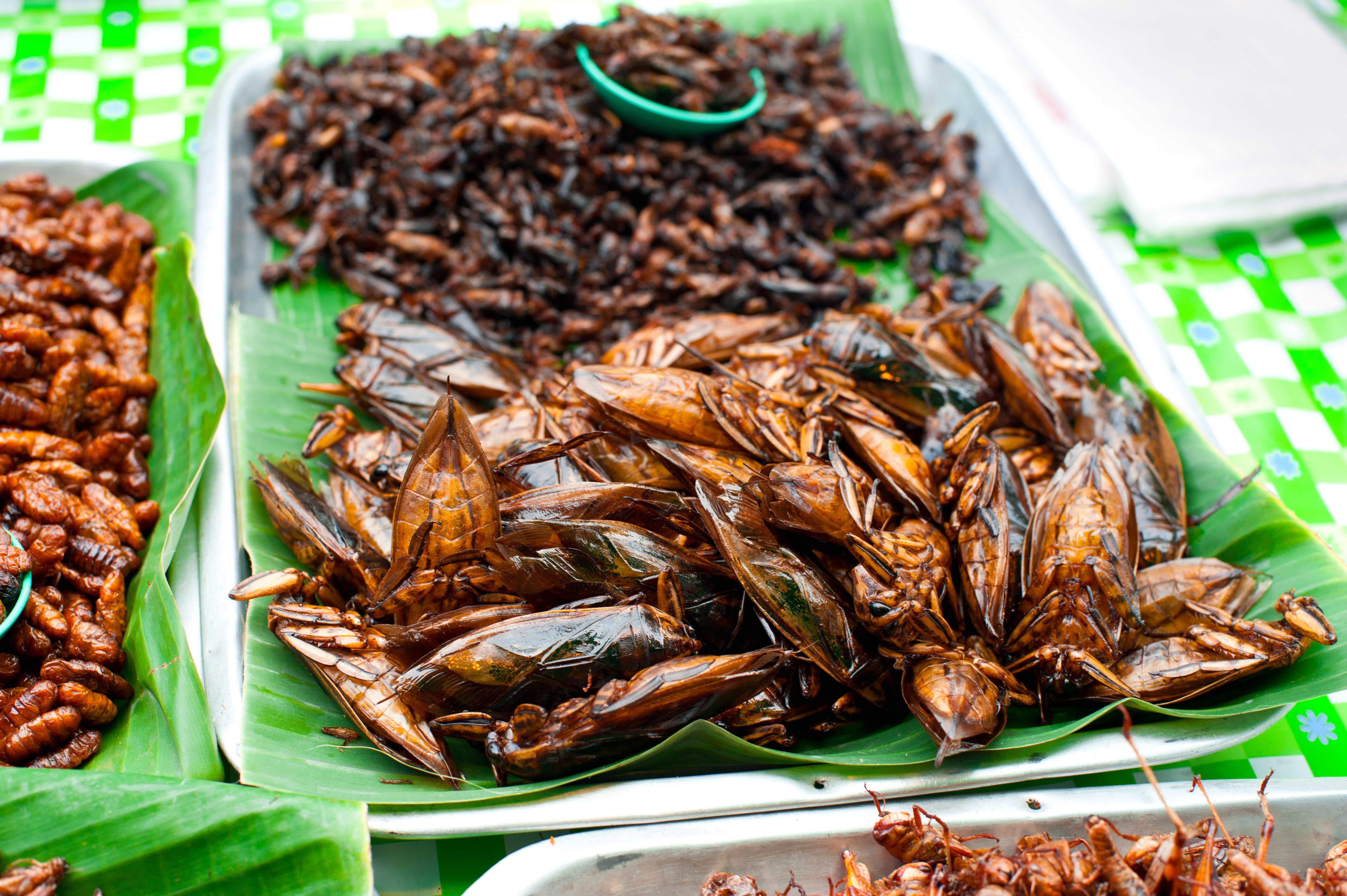Part of the Food Policy Snapshot Series
Policy Name: Insects as Foodstuffs, Switzerland
Location:
Switzerland
Population: 8,467,000 (2017, Worldometers)
Overview:
As part of the 2017 Foodstuffs Act, Switzerland has loosened its food safety laws to allow the sale of insects in grocery stores. It is the first country in Europe to pass such a law. Three types of insects are now available for human consumption: mealworms, crickets, and grasshoppers. The law regulates the conditions under which insects may be raised and sold to ensure proper sanitation and clear labeling.
Progress to date:
Sales of insect-based products have begun in Switzerland. A company called Essento has taken advantage of the new law by introducing insect-based products to the market. The products consist of recognizable foods made with insects, such as hamburgers and falafel. They were officially made available on August 21, 2017.
Program/Policy Initiated:
The law went into effect on May 1, 2017.
Food policy category:
- Food supply and distribution
- Sustainable diets and nutrition
Program goals:
Introduce insects as healthy and sustainable alternative foodstuffs in the Swiss market.
How it works:
The three types of insects officially available for human consumption are: tenebrio molitor in the larval stage (mealworm), acheta domesticus, in adult form (cricket), and locusta migratoria, in adult form (migratory locust/grasshopper).
Producers must follow similar guidelines to those in place for other animals raised for food. Strict adherence to good hygiene and manufacturing processes are required. Producers must follow the international standard hazard analysis and critical control points (HACCP) protocols.
Insects may not come from the wild. They must be raised in breeding colonies, and they must have been bred under supervision for at least four generations. Imports may consist of whole, crushed, or ground insects. However, regardless of their form, they must undergo a deep-freezing process as well as a heating treatment or other process that guarantees the elimination of potentially harmful pathogens.
Products containing insects must be labeled with both the common and scientific name of the species included. This is necessary to raise the awareness of consumers in addition to serving as a warning to people who may experience allergic reactions to insects.
Why it is important:
According to the Food and Agriculture Organization of the United Nations (FAO), mealworms, crickets, and grasshoppers contain levels of protein roughly equal to those available in beef. Many insects also contain high levels of healthy polyunsaturated fats, minerals, and essential amino acids.
The UN estimates that the world population will reach 9.8 billion by 2050. Moreover, meat consumption is growing rapidly. It’s well established that raising meat, and beef in particular, produces unsustainable quantities of greenhouse gases. Another study by the FAO shows that livestock contribute more greenhouse gas to the environment than the entire transportation sector. Insects, on the other hand, provide a more sustainable alternative. On average, they require 50-90% less land per kg of protein, 40-80% less feed, and produce significantly lower levels of greenhouse gases.
Interest in edible insects has grown in recent years, inspiring international conferences like Insects to Feed the World.
Evaluation:
Food importers are responsible for confirming that goods comply with legal requirements. Additionally, regional Cantonal Chemists may conduct periodic inspections for the Swiss government.
Learn more:
Point of Contact:
Federal Food Safety and Veterinary Office
Similar practices:
In many parts of the world, insects make up an important part of a traditional diet. Generally, they are not considered “novel foods,” and therefore are not subject to unique regulations. Rather, those raising or selling insects must adhere to the same standards that are applicable to those raising more conventional sources of meat like chicken or beef.
In the US, most FDA regulations deal with contamination and the amount of insects that may be legally present in food made for human consumption. The FDA also requires that edible insects be bred specifically for human consumption, and foods containing insects must be clearly labeled.
In Mexico, where insects are commonly eaten, particularly in rural areas, the Sustainable Rural Development Law explicitly encourages raising insects for food.
References:
https://www.worldometers.info/world-population/switzerland-population
https://www.fda.gov/food/guidanceregulation/haccp
https://www.fao.org/docrep/018/i3253e/i3253e06.pdf
https://www.un.org/development/desa/en/news/population/world-population-prospects-2017.html
https://www.fao.org/docrep/010/a0701e/a0701e00.HTM
https://www.wur.nl/en/show/Insects-to-feed-the-world.htm
https://www.fda.gov/RegulatoryInformation/Guidances/ucm056174.htm


